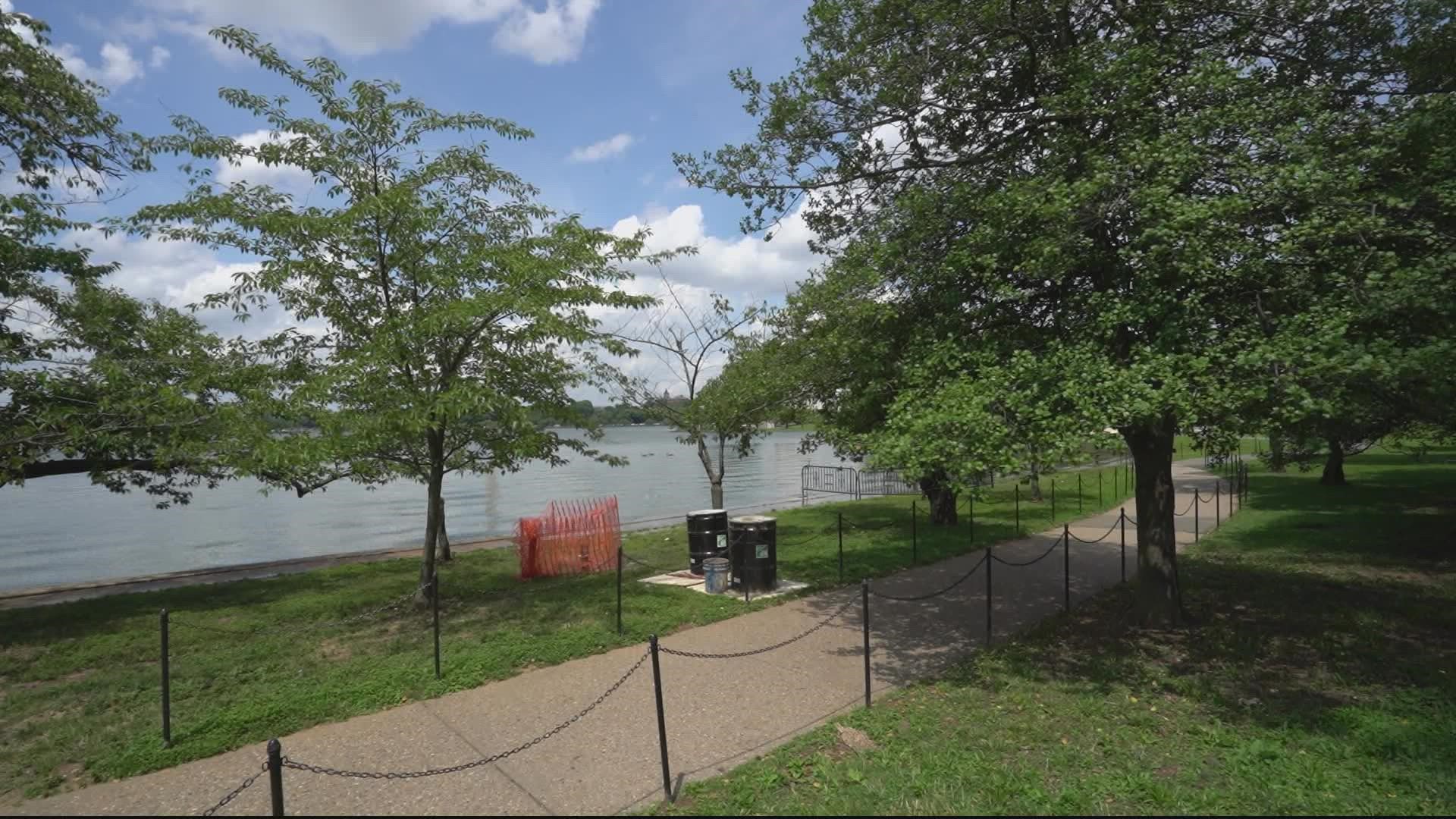WASHINGTON — For about 30 years the National Park Service has been battling flooding along the Tidal Basin. And it’s gotten so bad in recent years, that twice a day every day, water engulfs the original walkaway and floods this iconic, historic area.
It’s a 1-2 punch for the Tidal Basin. Since the seawalls were originally constructed in the 1930s and 40s, they’ve sunk an estimated 3-4 feet. At the same time the seawalls are settling down and the sea level is rising up. Around a foot to date.
“That's a net loss of four feet, on the infrastructure, the walkways, the sea walls around the title basin," explains Mike Litterst, Chief of Communications for the National Mall and Memorial Parks. “Most days when it goes over you can at least see where the sidewalk is. It’s 10 feet or more out.”
But now, thanks to a $5.7 million contract funded by the Great American Outdoors Act, planning is finally underway to plans repair the historic Tidal Basin and West Potomac Park.
The reconstructed seawalls will also free up time typically spent by the National Parks Service cleaning up debris that litters the walkway in the wake of flooding, monitoring and fencing areas under water and replacing iconic cherry blossoms that are damaged by the brackish high tide waters.
“Repair the sea walls has been a top priority for the National Park Service for years," says Litterst. "But it's an extremely expensive process, as you can imagine. And we're very fortunate the Great American Outdoors Act has created a source of revenue for infrastructure projects in the National Park Service. And it's allowed us to tap into some of the really big ticket items as well.”
While the final construction contract won’t be awarded until late 2023 or early 2024, crews are already doing test drilling to determine how far down the bedrock sits and some future design aspects are as clear.
Litterst adds, “They're going to have to go to bedrock. That's part of the problem we have with the original seawall is that they didn't sink the foundations to bedrock, which is why we've had so much trouble with settling over the years.”
Where possible, the historic stone masonry will be repurposed and reused but engineers also plan on using modern concrete and stone veneer technology that will increase durability and maintain its original character.
“It's got to be sustainable," says Litterst. "We're not in this just to fix what's wrong now. They've got to look for an eye for the future. So that 25, 50, 100 years from now, we're not fixing the same problems.”
While the planning process continues, the National Park Service wants to hear from you. You can visit the project website and ask any questions you may have or provide feedback. They’re accepting feedback until September 12th.

